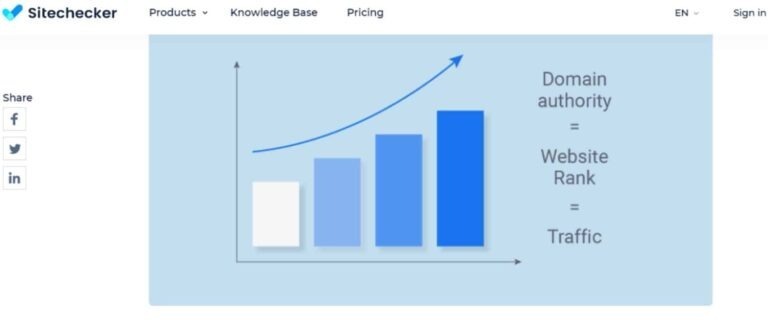If you’ve been finding ways to improve your website’s SEO, there’s a good chance you’ve encountered the term “domain authority”.
But what does this term mean? Can it help you with your SEO efforts? Does Google recognize it as an important metric?
In this post, we’ll be talking about the fundamentals and important points when it comes to domain authority. We’ll be answering common questions and debunking misconceptions related to the term.
What Is Domain Authority?
To increase the probability of success of a business in the digital world, one needs to improve its SEO.
The business needs to be seen in search engines to improve its visibility to its target market.
To determine how likely your website is going to rank in search engine results pages (SERPs), you can check its domain authority score.
Domain authority is a search engine ranking score first created by Moz. The scores generated here can range from 1 to 100.
The higher the score, the more likely it is for the website to rank.
If you want to check your Domain Authority score, you can check it through Moz’s Link Explorer tool.
Although many business owners consider this as an important metric, it’s important to note that Google doesn’t see Domain Authority as a factor when it comes to ranking websites.
The search engine giant doesn’t use this in its algorithm. Google may use a different metric but may have some similarities to Domain Authority.
Even Moz believes that it’s best to not mention it to Google. As Moz said, “They don’t tend to like that very much”.

The reason why Moz created Domain Authority was to predict rankings. And many users believe that it does its job very well.
Since the creation of Domain Authority by Moz, other websites started creating their own version of it.
Although each Domain Authority tool takes into account different factors, all of them measure the same thing – a website’s potential to rank.
- More Helpful Reading: https://www.fannit.com/seo/seo-tips/
Why Is Domain Authority Important?
Google constantly changes its algorithm on how it ranks websites in its search pages.
Google’s Senior Webmaster Trends Analyst, John Mueller confirmed it on Twitter years ago.
Not only does their algorithm constantly change, no one has ever cracked the code on how to surely rank on Google.
Instead of giving away the secret, what Google likes to do is share the best practices on how a website can rank.

So how does Domain Authority relate to all of this?
According to a research study done by Ahrefs, John Mueller mentioned that Domain Authority and Google’s algorithm “maps similar things”.
Ahrefs also studied the correlation of Domain Rating (their version of Moz’s Domain Authority) and keyword rankings for 200,000+ domains.
And what they saw was both variables correlate well.
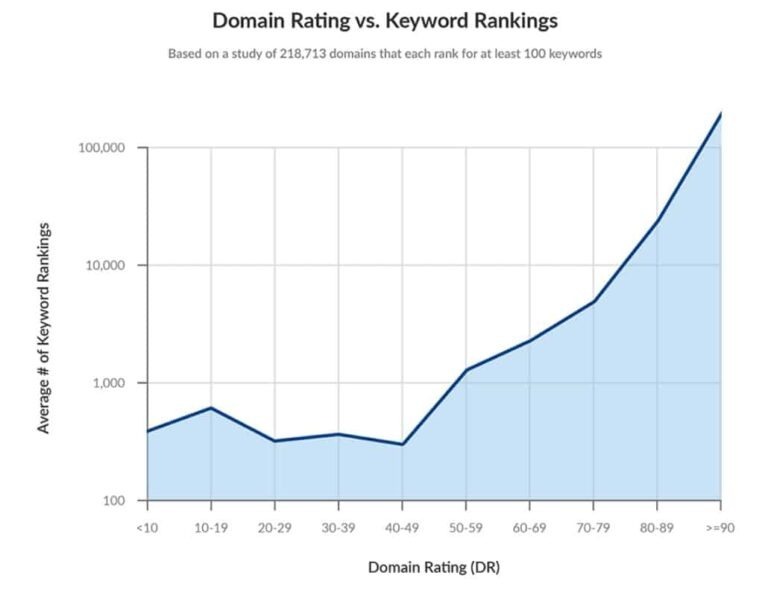
This graph shows that Domain Authority scores and the other tools related to it have a high correlation to search engine results pages.
What Is A Good Domain Authority Score?
As mentioned earlier, Domain Authority scores range from 0 to 100. The greater your score is, the higher the chance of ranking.

Websites that have a high number of external links are at the top end of a Domain Authority scale, compared to lesser-known websites that have fewer inbound links will have a lower Domain Authority score.
But is it enough to determine the Domain Authority score alone? Well, to effectively use that data, your score should be measured against your competition.
Measure your Domain Authority score against websites that are similar to yours.
Doing this makes your score relative. A good score will depend on what industry you’re in.
A score of 45 might be a great score to have in a very niche industry like a Halloween costumes niche. But if you compare it to an SEO agency niche that serves a broader market, a 45 DA score might be seen on the lower end.
Moz suggests to “look at the DA scores for the sites you compete with directly in the SERPs and aim for a higher score than your competitors”.
This means that the best way to use the Domain Authority score is to compare it with your “peers” in your industry.
Given that the metric is relative to the industry or line of work that the website is in, there’s no standard on what’s a good, average, or bad score.
6 Ways To Increase Domain Authority Score
Let’s take a look at the different ways you can increase domain authority score.
Remember, you will have to dedicate a small team to improving your domain authority or work with a knowledgeable marketing company like Fannit that can handle this part of your marketing strategy.
1. Check Your Link Profile
A link profile pertains to all of the backlinks to your website. When it comes to Domain Authority scores, these tools check whether the backlinks to your website come from high authority sites.
High authority websites are those that are trusted and go-to websites in their niche.
These are the sites that people go to if they’re trying to search for something.
Getting backlinks from these websites lets Domain Authority tools and most especially Google know that your website is also trusted and of quality.
How? Because high authority sites don’t just use links to websites that are mediocre. They always share links that come from valuable and insightful sites.
Here are a few things to do to improve and grow your link profile:
1.1 Guest Posting
Guest posting is a great way to get your website out there and build links.
That’s why guest posting is always used in affiliate marketing because it allows people to grow their network and share their links.
As more people get to see their work and name, the higher the chance of people also seeing their referral programs.
In guest posting, not only are you showcasing your skills and displaying your value but your voice also gets heard in front of a whole new audience.
This gives you an opportunity to let them know about your website and how your content can also solve a problem of theirs.
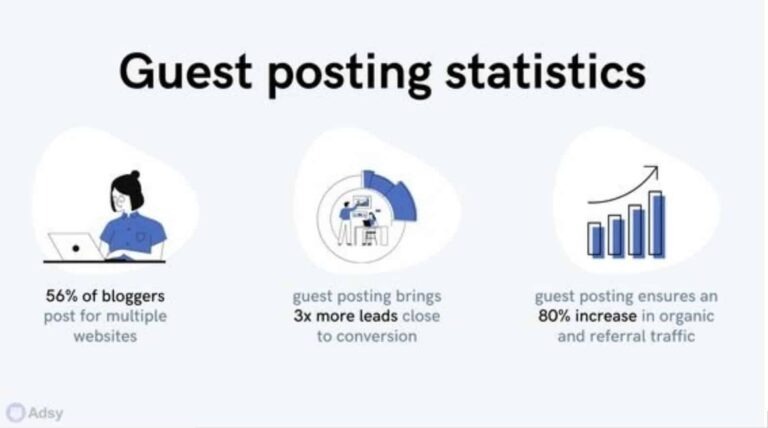
More Helpful Reading: https://www.fannit.com/seo/meta-description/
1.2 Create Value-Packed Posts
This one is obvious but unfortunately, some choose the route of quantity over quality.
One great article that’s filled with information and actually helps readers is better than 10 articles that are full of fluffs and just the same old content as the others.
A value-packed post can come in the form of presenting an entirely new topic that you know can help your audience.
It makes them appreciate your website more for giving them ideas.
Examples of this would be if your audience is into Amazon selling, you can teach them how they can fully automate an Amazon business.
If your audience is farmers, teach them the innovative technology of drones and how they can analyze and track flooding and plant health.
When you create valuable and idea-generating posts, your readers will be more inclined to leave comments, discuss your ideas, share the post, and recommend it to others.
1.3 Make Your Posts SEO Friendly
Creating a value-packed post is only the first step, you also need to put in the effort in making your post SEO friendly.
An SEO friendly post contains:
- A catchy headline
- The content is keyword optimized
- It has optimized meta descriptions
- Proper usage of headings
- A correct URL
2. Website Optimization
Aside from ensuring security awareness for a website, it also needs to be optimized.
Website optimization can be discussed when you hire a web designer but it can also be done on your own.
Web optimization is about improving the overall performance of your website. It’s about making everything on your website be SEO-friendly.
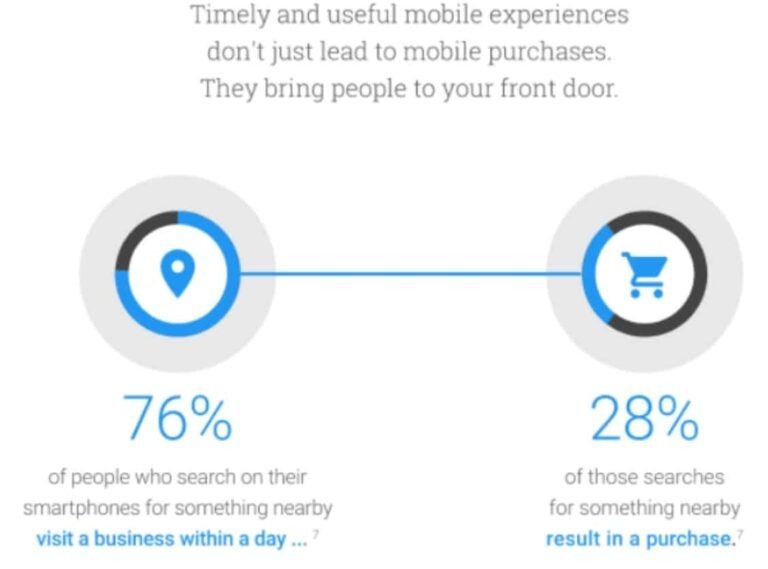
This feature is needed to be done if a business wants to increase its search ranking.
People who browse the internet are more drawn towards websites that are easy to navigate, cool on the eyes, work on mobile, and more importantly fast.
People nowadays want everything instantly. Faster streaming time, buffering, and delivery.
If your website isn’t fast enough, you run the risk of your web visitor closing your site and move on to your competitors. Your landing pages and exit-intent popups will never get to see a visitor if site speed is slow.
If you don’t optimize your website and the contents inside it, your website won’t show up on search engines.
It won’t be seen by the millions of people browsing the internet and searching for information in your niche.
3. Create Engaging Content
Bounce rates and other engagement metrics can affect the outcome of your score. So it’s important that you only publish engaging content.
Content isn’t just limited to blog posts, video is also part of this spectrum – video ads, video marketing campaigns, and online video streams.
If you think that the content isn’t in its best form, leave it as a draft first. Think of ways on how you can improve it.
It’s the same logic used when you don’t want to release an unfinished product or half-baked content.
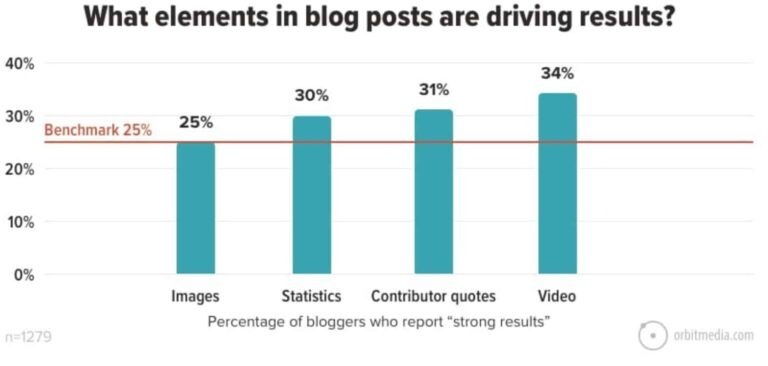
Doing the things mentioned in 1.c is just one part of the equation in making your posts SEO-friendly.
There are also other factors that you need to consider to make your post engaging.
3.1 The Article Should Be Easy to Digest
First, you need to read your whole post. Put yourself in the shoes of your readers and think about whether the content is easy to digest. Easy to understand content are what people appreciate.
This should be one of your main goals if you’re creating a topic that’s fairly new to people.
For example, if you’re going to talk about an NFT-Defi platform, the usage of a predictive dialer, or the emergence of smart contracts on blockchains, you need to explain it in a way that your readers won’t look for other blog posts on the topic.
Most often than not, people are reading your post because they’re looking for answers and information.
And you want your post to provide the answer.
The last thing you want to do is confuse them even more. If you provide the answer, readers will see your site as valuable.
This increases the chances of them going back to your website to find answers.
- More Helpful Reading: https://www.fannit.com/seo/seo-content-writing/
3.2 It Should Be Visually Appealing
Nothing turns most readers off than seeing a lengthy paragraph one after the other. It’s like reading an old textbook – it’s boring and dragging.

If you want your readers to read your post from start to finish, make the overall post visually appealing.
Not only does it increase retention rate but visual content also improves user experience.
Insert some relevant images, throw in some infographics, and use stunning charts and graphs.
A proper balance between texts and images should be done. It just makes the whole article visually great.
4. Check Out The Competition
If you’ve taken digital marketing courses, you know how often these lecturers tell you to observe and take note of what’s working for your competitors – it’s part of the overall growth marketing methodologies they teach.
The same logic is applied in this context.
As we’ve said earlier, one of the best ways to interpret Domain Authority would be to compare your score against your competitors.
But you don’t just want to compare yourself against any competitor, you want to measure up against competitors that have high search rankings and high DA scores.
Once you’ve identified your competitors, it’s time to put on your detective hat.
Check out their website and observe what they’re doing. Take note of what their top pages are and what keywords they’re using.
You can also observe how they structure their post and how they keep it engaging for their audience.
Once you’ve observed these things, take note of them.
Maybe you can learn a thing or two from your competitor to make your content even better.
Chances are if they rank high on search engines or have a high DA score, they’re doing something right. If their metrics are better than yours, then it means that they’re doing something that you’re not.
Always aim for constant improvement.
Soon enough you’ll be hitting those metrics you’ve set out for your website.
5. Check Your Own Statistics
Sometimes we’re too busy pumping out content for our audience that we forget that we also need to look at the data behind those contents.
To improve your chances of ranking and improving your score, you need to study your own data.
Check out your top pages and observe why they had more engagements than your other articles.
Is it because of the topic? The style of writing you’ve used? The image to text ratio you decided on?
Remember, there’s a reason why those posts have the highest engagements.
Maybe you can also find a correlation between your top post and your competitor’s top post as well.
If you found a common thing between these two things then you now have the answer to what type of content are people searching for in your niche.
- More Helpful Reading: https://www.fannit.com/seo/free-backlinks/
6. Promote Your Content
Sometimes, your content isn’t hitting those numbers because it lacks promotion.
It might have the best information out there but if there are no eyes to see it, it will never be appreciated.
Your job isn’t done once you’ve finished your content, you still need to promote it on social media.
Promote it on platforms where your audience hangs out the most. Once you’ve done it, check your social media engagement tools to monitor any type of engagement with your posts.
As Moz said, “You can’t go wrong with continuing to build your backlink profile through good old fashion link building!”
How To Use Domain Authority Correctly
When it comes to Domain Authority, the most common idea is to reach a goal of Domain Authority score of 100.
But the truth is, Domain Authority was not made so that websites can go for 100. It was made to compare your site from your competitors’ sites.
It allows you to see where you are against your competition.
Sites with 100 Domain Authority scores are the likes of Facebook, Amazon, and Wikipedia.
Unless you think that your website can compete with these global companies, reaching 100 is not the goal.
Moz suggests that rather than aiming for 100, it’s more efficient to work on gaining a wider gap between your site and that of your competitors.
Remember, these scores are relative.
If you’re a small local business that works in the pet industry, comparing your DA score to the likes of Petco isn’t the most efficient way to use it.
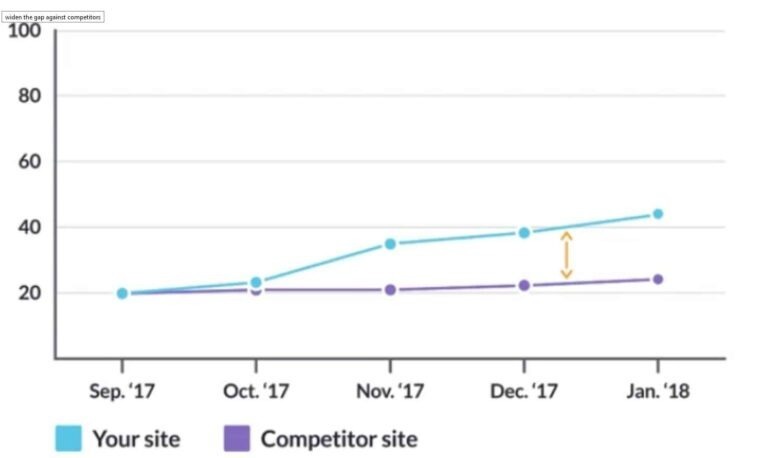
Instead, what you can do is find other businesses that are the same as yours in your local town and compare your score.
With this, you’re both comparing two small businesses within the same location.
You’ll have more data to work with than comparing yourself against a global brand like Petco.
- More Helpful Reading: https://www.fannit.com/blog/pagespeed-insights/
Ready to Achieve a High Domain Authority Score?
Achieving a high Domain Authority won’t be easy and it can’t be done overnight as well.
But with constant improvement and trials and errors, eventually, that score will go up.
By working on improvements, you’ll start to see what your audience wants to hear and read from you.
This then gives you an advantage over your competitors who keep doing the same thing. You’ll widen the gap between you and them.
To learn how to boost your domain authority, contact Fannit today and our team will be glad to help.

